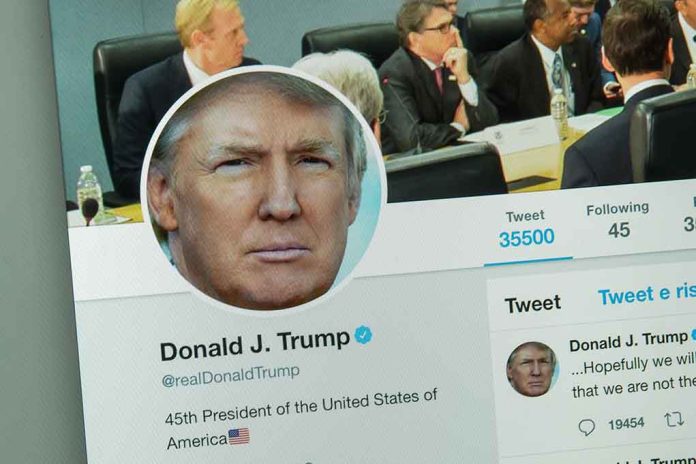
President-elect Donald Trump unveils a bold plan to safeguard free speech and combat censorship in America, sparking both praise and controversy.
At a Glance
- Trump has previously announced a comprehensive free speech policy initiative.
- The plan aims to dismantle what Trump calls a “censorship regime”.
- Proposed measures include executive orders, federal agency reforms, and legal actions.
- Trump frames the initiative as crucial for America’s survival and Western Civilization.
Trump’s Free Speech Policy Initiative
Donald J. Trump has unveiled a sweeping policy initiative aimed at promoting and protecting free speech in the United States. The announcement comes as a response to what Trump perceives as an increasing trend of censorship, particularly targeting conservative voices. The initiative outlines a series of measures designed to restrict the power of tech giants in policing content and to foster digital spaces that champion free expression.
This alone puts DJT in company with the greatest U.S. presidents since Lincoln. The globalist project has laid siege to democracy and freedom across the globe. The USA is the final redoubt. President Trump just launched freedom’s counterattack. https://t.co/2brXEjTByg
— Robert F. Kennedy Jr (@RobertKennedyJr) November 9, 2024
Trump’s proposal includes signing an executive order to prevent federal agencies from colluding to censor lawful speech, banning federal funds from labeling domestic speech as misinformation, and ordering the Department of Justice to investigate and prosecute parties involved in online censorship. These measures are intended to address what Trump sees as a coordinated effort by various entities to silence Americans.
Revising Section 230 and Breaking Up the “Censorship Industry”
A key component of Trump’s plan involves revising Section 230 of the Communications Decency Act to ensure digital platforms meet standards of neutrality and transparency. This revision aims to hold tech companies more accountable for their content moderation practices. Additionally, Trump proposes breaking up what he terms the “censorship industry” and halting federal funding for related non-profits and academic programs.
“If we don’t have FREE SPEECH, then we just don’t have a FREE COUNTRY,” says Trump.
The initiative also calls for implementing a 7-year cooling-off period for former intelligence officials before they can join companies with access to U.S. user data. This measure is intended to address concerns about potential collusion between government agencies and private tech companies in suppressing free speech.
A Digital Bill of Rights
Trump’s plan proposes a digital Bill of Rights, which would include digital due process and user rights regarding content moderation. This proposal aims to provide greater protection for individuals’ online speech and ensure that content moderation practices are more transparent and equitable.
“That’s why today, I am announcing my plan to shatter the left-wing censorship regime, and to reclaim the right to Free Speech for all Americans,” expresses confidently the President-elect.
Trump has framed this initiative as a crucial battle for America’s future, stating, “The fight for Free Speech is a matter of victory or death for America—and for the survival of Western Civilization itself.” This rhetoric underscores the significance Trump and his supporters place on this issue.
Reactions and Potential Impact
Trump’s free speech initiative has sparked a polarized response. Supporters view these proposals as essential for safeguarding democratic principles and protecting conservative voices online. Critics ambiguously warn that some measures could potentially lead to the unchecked proliferation of harmful content on digital platforms. Conservatives argue, however, that these protections are necessary to ensure a truly open marketplace of ideas where diverse perspectives can thrive without fear of suppression.
As the national discourse on balancing free speech and responsible communication continues, Trump’s policy initiative represents a significant development in this ongoing debate. The implementation and potential consequences of these proposed measures will likely remain a topic of intense discussion as America adjusts to its new chosen leadership.





